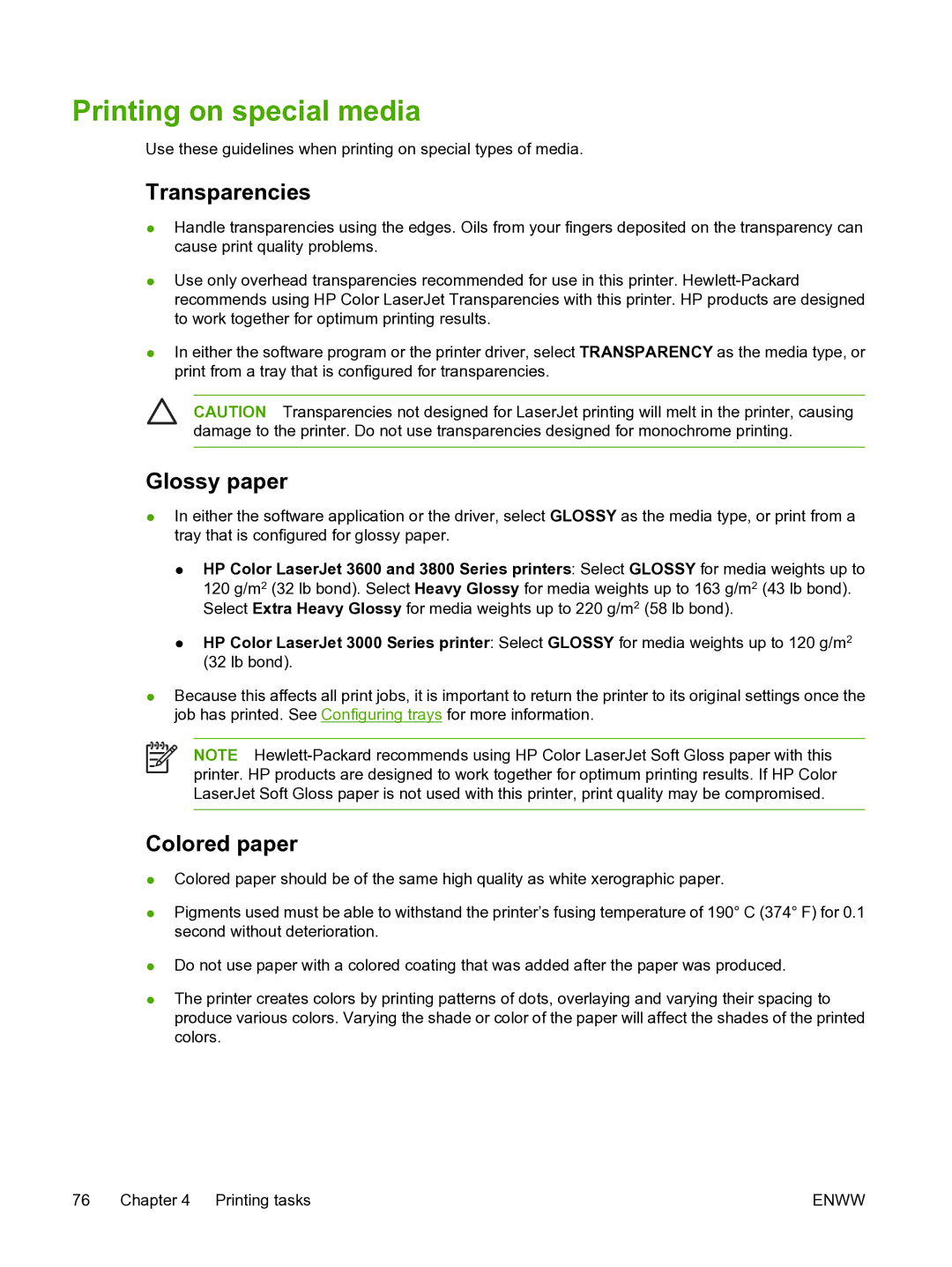
Printing on special media
Use these guidelines when printing on special types of media.
Transparencies
●Handle transparencies using the edges. Oils from your fingers deposited on the transparency can cause print quality problems.
●Use only overhead transparencies recommended for use in this printer.
●In either the software program or the printer driver, select TRANSPARENCY as the media type, or print from a tray that is configured for transparencies.
CAUTION Transparencies not designed for LaserJet printing will melt in the printer, causing damage to the printer. Do not use transparencies designed for monochrome printing.
Glossy paper
●In either the software application or the driver, select GLOSSY as the media type, or print from a tray that is configured for glossy paper.
●HP Color LaserJet 3600 and 3800 Series printers: Select GLOSSY for media weights up to 120 g/m2 (32 lb bond). Select Heavy Glossy for media weights up to 163 g/m2 (43 lb bond). Select Extra Heavy Glossy for media weights up to 220 g/m2 (58 lb bond).
●HP Color LaserJet 3000 Series printer: Select GLOSSY for media weights up to 120 g/m2 (32 lb bond).
●Because this affects all print jobs, it is important to return the printer to its original settings once the job has printed. See Configuring trays for more information.
NOTE
Colored paper
●Colored paper should be of the same high quality as white xerographic paper.
●Pigments used must be able to withstand the printer’s fusing temperature of 190° C (374° F) for 0.1 second without deterioration.
●Do not use paper with a colored coating that was added after the paper was produced.
●The printer creates colors by printing patterns of dots, overlaying and varying their spacing to produce various colors. Varying the shade or color of the paper will affect the shades of the printed colors.
76 Chapter 4 Printing tasks | ENWW |
